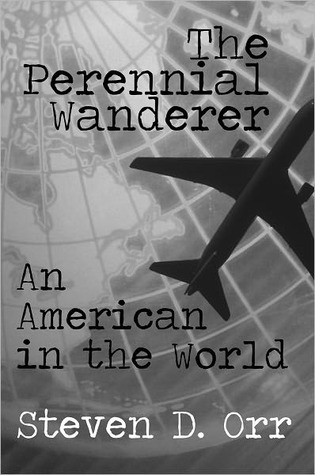
The Perennial Wanderer: An American in the World
Book Description
A heart left behind in every corner of the globe, Steven D. Orr’s 'The Perennial Wanderer: An American in the World' plunges into the exhilarating chaos of modern travel. Each destination unfolds a vibrant tapestry of culture, challenge, and connection, where fleeting encounters ignite passion and provoke deep reflection. Amidst breathtaking landscapes and bustling cities, a relentless quest for meaning collides with the stark realities of loneliness and belonging. As friendships blossom and fade, the wanderer grapples with the question: what truly defines home? Can the soul ever find peace in a world that never stops moving?
Quick Book Summary
Steven D. Orr’s "The Perennial Wanderer: An American in the World" is an evocative journey through the unpredictable intricacies of global travel. Drawing from decades of personal adventure, Orr reflects on how every far-flung locale leaves its mark on the soul, sparking breathtaking joy, bittersweet encounters, and profound introspection. The book moves beyond mere accounts of places and events, and instead investigates the dynamic interplay between the lure of novelty and the ache of transience. As Orr weaves stories of friendship, challenge, and self-discovery, he explores universal themes of loneliness, identity, and the elusive notion of ‘home’ in an ever-changing world. His narrative ultimately confronts the question of whether true belonging comes from finding a place, or forging meaning within perpetual motion.
Summary of Key Ideas
Table of Contents
The Search for Belonging Across Continents
Orr’s journey begins with a restless desire to explore beyond the familiar, propelled by a curiosity about distant lands and an urge to break free from ordinary life. The initial exhilaration of travel is tinged with anxiety, as he constantly negotiates between comfort and discomfort, predictability and chaos. This contrast forms the foundation of his reflections, as each new setting brings both excitement and the unsettling sense of being an outsider, challenging his assumptions and expanding his worldview.
Culture Shock and Connection
As Orr immerses himself in cultures vastly different from his own, he grapples with the complexities of cultural exchange. Stories of sharing meals, learning local customs, and navigating language barriers reveal how authenticity and open-mindedness foster connections that transcend geography. However, these connections are often fleeting, serving as poignant reminders of the temporary nature of travel relationships. While such encounters can be superficial, they also offer rare glimpses of genuine understanding and communion across divides.
The Beauty and Burden of Impermanence
The book delves deeply into the paradox of impermanence that defines the life of a traveler. Orr confronts the loneliness that often accompanies mobility, describing how the thrill of new scenery is matched by the heartache of goodbyes. He questions whether it is possible to truly belong anywhere, or if perpetual motion inevitably leads to emotional detachment. In candid moments of vulnerability, Orr shares his struggle to build meaningful ties while knowing that every cherished experience is shadowed by the promise of departure.
Self-Discovery on Unfamiliar Roads
Amid the drama and unpredictability of adventure, travel becomes a mirror for Orr’s internal journey. The challenges, missteps, and moments of awe encountered on the road prompt deep self-reflection. Through solitude and confrontation with his fears, Orr gradually uncovers aspects of his identity shaped by both his American roots and his encounters abroad. The narrative emphasizes that stepping into the unknown is as much an inward voyage as it is an exploration of the world.
Redefining Home in a Restless World
By the book’s end, Orr turns to the concept of ‘home,’ interrogating what it means in an age defined by globalization and constant movement. He suggests that home is not so much a fixed place as it is an accumulation of experiences, memories, and relationships gathered over a lifetime. The narrative concludes with a sense of acceptance, asserting that peace is found not in rooting oneself, but in embracing the beauty and possibility of being perpetually in motion.
Download This Summary
Get a free PDF of this summary instantly — no email required.





